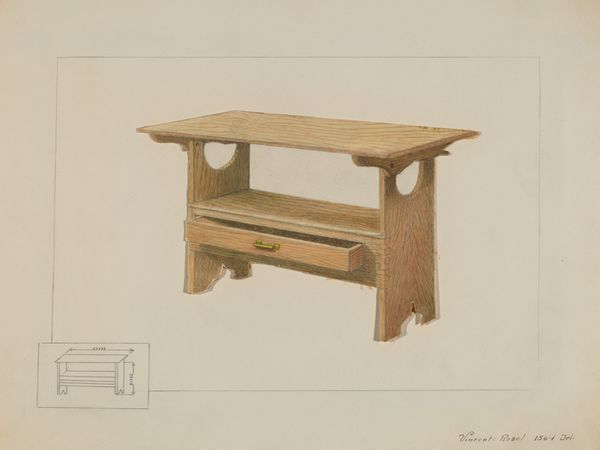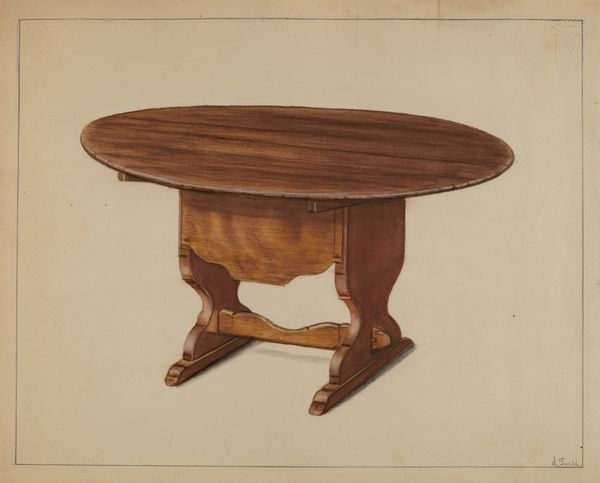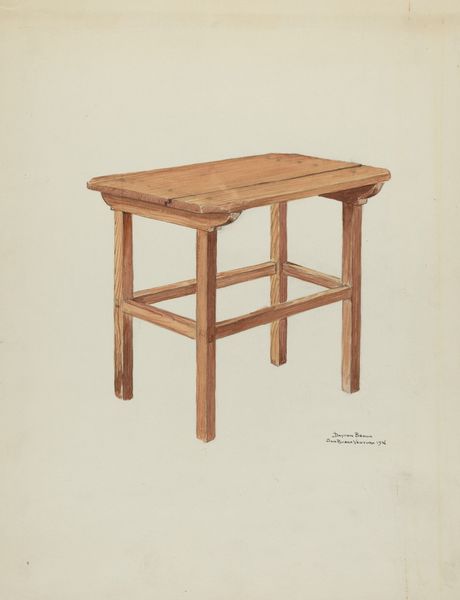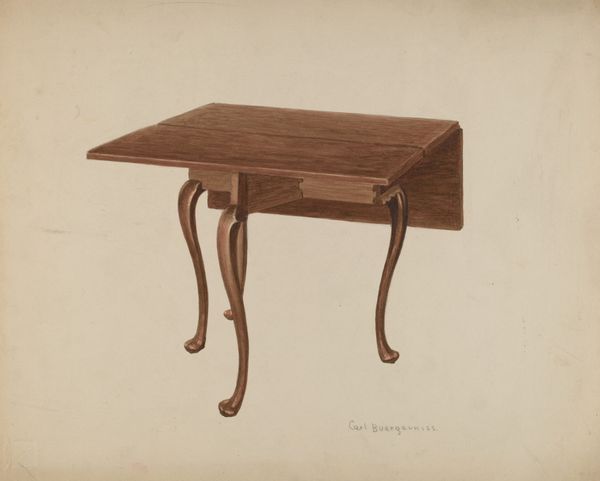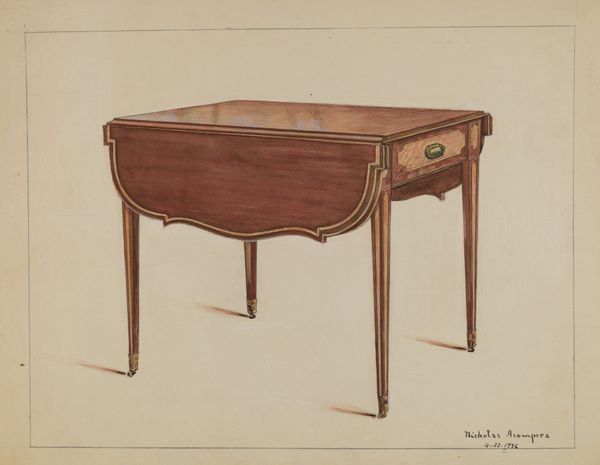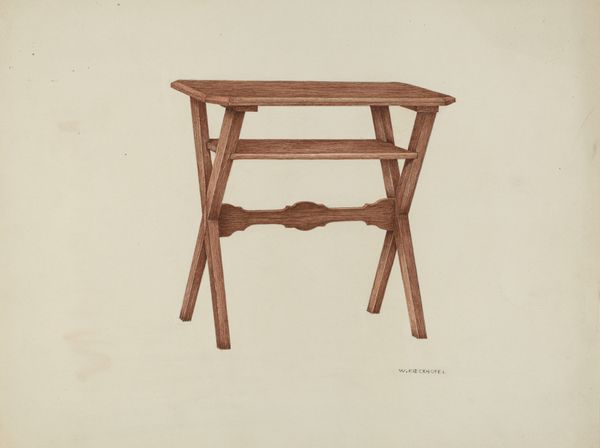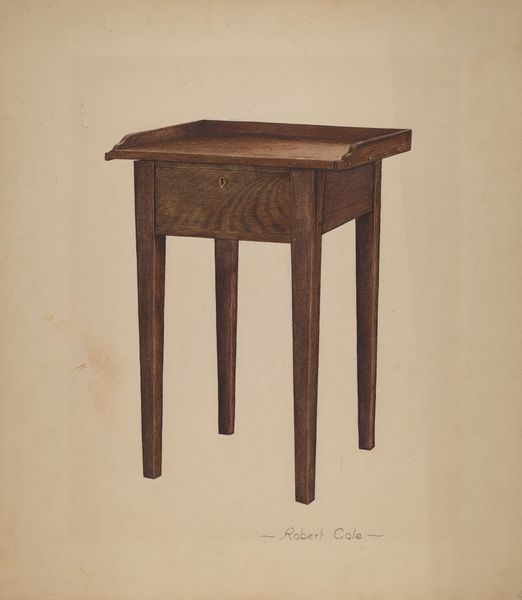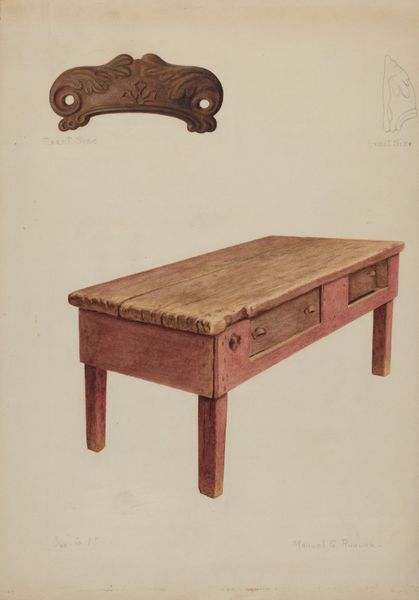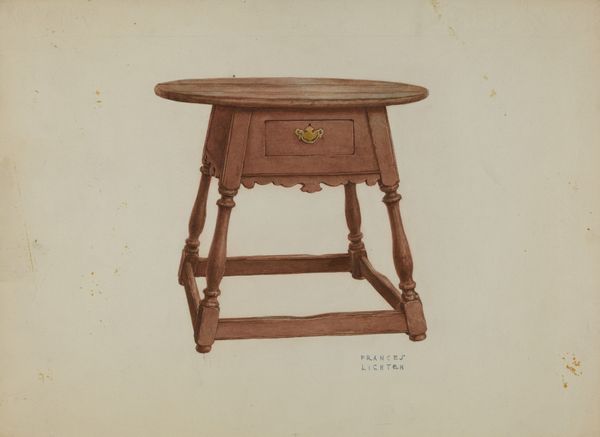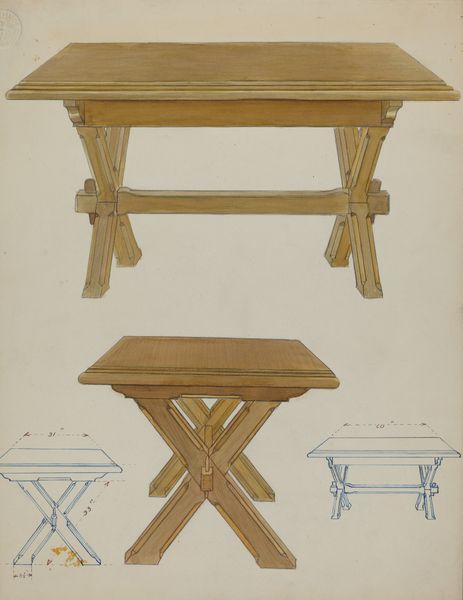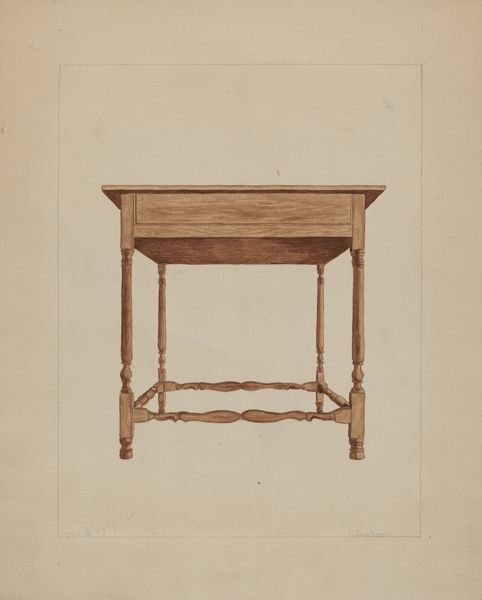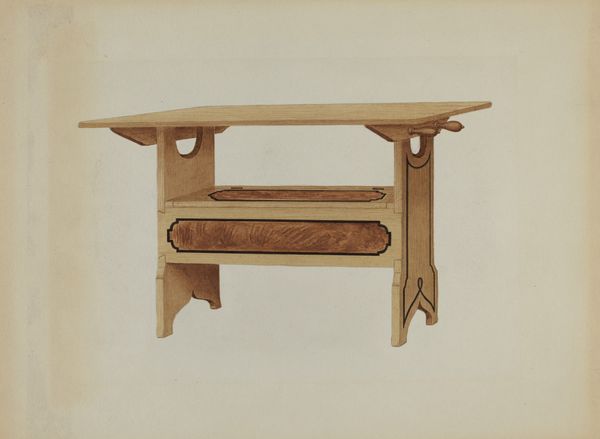
drawing, paper, watercolor
#
drawing
#
water colours
#
paper
#
watercolor
#
geometric
#
watercolor
Dimensions: overall: 22.9 x 30.6 cm (9 x 12 1/16 in.) Original IAD Object: 28"high; Center sect., top: 10x36"; Two sides: 20x36". See d.s. for dets.
Copyright: National Gallery of Art: CC0 1.0
Curator: Here we have "Table," a watercolor on paper crafted around 1937 by Ernest A. Towers, Jr. What are your first thoughts on encountering this image? Editor: A curious blend of precision and wistfulness. It reminds me of an architect's blueprint, but rendered in such soft, almost dreamlike watercolors. There's a stillness to it, a quiet invitation. Curator: Indeed. Tower's technical drawing approach reflects the emphasis placed on architectural documentation and design during that era. There was a drive to capture and understand form through rigorous observation. Editor: Right, it’s so contained, almost bottled up! The cool detachment makes me think it could also be a rendering for a stage play or a doll house; something theatrical or intimate, perhaps. Do you feel like Towers was maybe yearning for something beyond the confines of mere geometric shapes? Curator: Perhaps! Although the rendering is simple, one could view the craftsmanship displayed as symbolic of the aspirations of American industrial design in the interwar period. Furniture design played a pivotal role in expressing the ethos of efficiency and progress through streamlining. Editor: And it almost becomes precious, set like this under glass or a frame; like some kind of trophy or keepsake instead of a diagram. So funny! Maybe he saw a hidden world within functional designs? Curator: It would seem so, yes! Artists during this period began embracing everyday subject matter, lending importance to elements traditionally deemed mundane. Towers does this expertly, offering viewers a deeper insight into everyday items. Editor: So true. This work almost compels me to build something! I'm oddly inspired by his ability to see art and express it so vividly through something so practical and functional. I will think about this one for a long time! Curator: It's quite remarkable how "Table" bridges artistic rendering and design principles. It offers a valuable view into both the culture of early 20th century furniture-making, and how Towers approached making art more broadly.
Comments
No comments
Be the first to comment and join the conversation on the ultimate creative platform.

